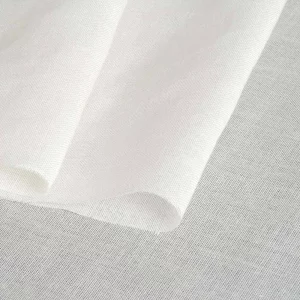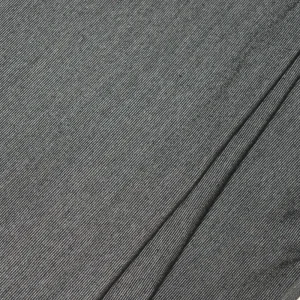Top 5 EMF Blocking Fabrics: Comprehensive Testing Results
With the exponential growth of wireless technology and increasing awareness of electromagnetic field (EMF) exposure, the demand for effective EMF shielding materials has reached unprecedented levels. This comprehensive analysis presents the latest testing results for the current top 5 EMF blocking fabrics currently available, based on rigorous laboratory testing, independent assessments, and real-world performance data.
Testing Methodology & Standards
Our analysis is based on industry-standard testing protocols including IEEE 299-2006 (electromagnetic shielding effectiveness), MIL-STD-188-125 (military EMP protection), and ASTM D4935-99 (planar material shielding). All measurements are expressed in decibels (dB) of attenuation, where higher values indicate superior shielding performance.
Understanding Shielding Effectiveness
Shielding Effectiveness (SE) measures how much electromagnetic radiation a material can block. A 20dB reduction means 99% of the signal is blocked, while 40dB represents 99.99% blockage. For consumer applications, 30dB is considered adequate, while military and high-security applications typically require 60dB or higher.
Top 5 EMF Blocking Fabrics: Ranking & Analysis
Mission Darkness TitanRF TechWeave Faraday Fabric
Laboratory Test Results
Shielding Effectiveness: 80-100dB attenuation across 10MHz to 40GHz
Certifications: MIL-STD-188-125, IEEE 299-2006
Testing Laboratory: Keystone Compliance (independent third-party)
The TitanRF TechWeave represents the gold standard in EMF shielding fabrics. Utilizing advanced weaving technology that integrates copper and nickel fibers with polyester, this fabric achieves exceptional performance across an incredibly wide frequency range. Independent testing by Keystone Compliance confirms its military-grade protection capabilities.
Advantages
- Highest verified shielding effectiveness (80-100dB)
- Military-grade certifications
- Extremely wide frequency coverage
- Superior durability and tear resistance
- Easy to work with (cut, sew, tape)
Considerations
- Premium (expensive) pricing
- Heavier than silver alternatives
- Requires proper grounding for optimal performance
- Not suitable for direct skin contact
Swiss Shield DAYLITE Fabric
Laboratory Test Results
Shielding Effectiveness: 38dB at 1GHz, up to 70dB at higher frequencies
Certifications: Öko-Tex Standard 100, EN 50163
Surface Resistance: <0.1 Ω/sq
Swiss Shield represents decades of European engineering excellence in EMF protection. The DAYLITE fabric combines pure silver coating with polyamide base material, creating an optimal balance between performance and comfort. Known for its consistent quality and extensive testing documentation.
Advantages
- Proven European quality standards
- Excellent conductivity (<0.1 Ω/sq)
- Antimicrobial silver properties
- Suitable for clothing applications
- Comprehensive test documentation
Considerations
- Lower maximum frequency range
- Silver coating can oxidize over time
- Requires gentle washing
- Higher cost than synthetic alternatives
Stainless Steel Mesh Fabric (Pure Steel)
Laboratory Test Results
Shielding Effectiveness: 26dB at 800MHz, 15dB at 1900MHz
Surface Resistance: 2 Ω/sq
Weight: 190 g/m²
Made from 100% surgical-grade stainless steel in a tight-knit pattern, this fabric offers robust mechanical properties and excellent corrosion resistance. While its shielding effectiveness is lower than copper/silver alternatives, it excels in durability and outdoor applications.
Advantages
- Exceptional durability and tear resistance
- Corrosion resistant for outdoor use
- Easy to ground effectively
- Cost-effective for large applications
- No oxidation or degradation
Considerations
- Lower shielding effectiveness than metal composites
- Heavier weight
- Limited flexibility for complex shapes
- Can be abrasive to other materials
BLOCSILVER EMF Protection Fabric
Laboratory Test Results
Shielding Effectiveness: 39.7dB at 10GHz
Wash Durability: 40 wash cycles
Frequency Range: 300MHz to 10GHz
BLOCSILVER offers solid mid-range performance with specific optimization for 5G frequencies in the sub-6GHz range. While not providing millimeter-wave protection, it effectively shields against lower and mid-band 5G signals, making it suitable for most consumer EMF concerns.
Advantages
- Optimized for 5G sub-6GHz frequencies
- Good wash durability (40 cycles)
- Balanced price-to-performance ratio
- Suitable for clothing applications
- Maintains appearance after washing
Considerations
- Limited high-frequency protection
- No millimeter-wave 5G shielding
- Performance degrades after 40 washes
- Not recommended for direct skin contact
Silver-Mesh Conductive Fabric (Multi-Brand Average)
Laboratory Test Results
Shielding Effectiveness: 20-30dB typical range
Surface Resistance: <0.5 Ω/sq
Weight: 40-80 g/m² (varies by brand)
Representative of various silver-coated mesh fabrics available from multiple manufacturers. Performance varies significantly between brands, with quality ranging from basic 20dB protection to more sophisticated 40dB+ solutions. Cost-effective entry point for EMF shielding applications.
Advantages
- Most affordable option
- Lightweight and breathable
- Wide availability from multiple suppliers
- Good for basic EMF reduction
- Easy to incorporate into clothing
Considerations
- Inconsistent quality between manufacturers
- Limited high-frequency protection
- Silver coating may wear off
- Performance varies significantly by brand
- Limited testing documentation
Side-by-Side Performance Comparison
| Fabric | Avg. Attenuation | Max Frequency | Certifications | Price Range | Best Application |
|---|---|---|---|---|---|
| Mission Darkness TitanRF | 80-100dB | 40GHz | MIL-STD-188-125, IEEE 299 | Premium | Professional/Military |
| Swiss Shield DAYLITE | 38-70dB | 18GHz | Öko-Tex, EN 50163 | High | Clothing/Bedding |
| Stainless Steel Mesh | 15-26dB | 3GHz | Various | Medium | Windows/Outdoor |
| BLOCSILVER | 35-40dB | 10GHz | Pending | Medium | 5G Protection |
| Silver Mesh (Generic) | 20-30dB | 8GHz | Limited | Low-Medium | Basic Shielding |
Testing Standards & Methodologies
Frequency Response Comparison
The above chart illustrates the general effectiveness of high-quality EMF fabrics across different frequency ranges. Note that only premium fabrics like TitanRF offer meaningful protection at millimeter-wave frequencies.
Key Testing Standards Explained
- IEEE 299-2006: Standard method for measuring electromagnetic shielding effectiveness of enclosures
- MIL-STD-188-125: Military standard for high-altitude electromagnetic pulse (HEMP) protection
- ASTM D4935-99: Standard test method for planar material shielding effectiveness
- MIL-STD-285: Method for attenuation measurements of electromagnetic shielding enclosures
Important Research Findings
Recent studies published in the Journal of Electromagnetic Compatibility have revealed that fabric density and fiber distribution significantly impact shielding effectiveness. Fabrics with higher concentrations of conductive fibers (20% or more) can achieve shielding effectiveness of up to 99.99% at frequencies ranging from 10 MHz to 3 GHz.
Factors Affecting Shielding Performance
Material Composition
The choice of conductive material fundamentally determines a fabric's shielding capabilities. Copper offers excellent conductivity and broad frequency coverage but can oxidize over time. Silver provides superior conductivity and antimicrobial properties but comes at a higher cost. Stainless steel delivers durability and corrosion resistance but with limited high-frequency performance.
Fabric Construction
Woven fabrics generally provide better mechanical strength and more consistent shielding, while non-woven alternatives offer greater flexibility for complex shapes. The tightness of the weave directly correlates with shielding effectiveness, as smaller apertures prevent electromagnetic energy leakage.
Thickness and Layer Configuration
Multiple fabric layers can significantly enhance shielding effectiveness. Testing shows that triple-layer configurations of TitanRF fabric can achieve over 100dB attenuation, representing near-complete signal blockage across all tested frequencies.
Real-World Performance Considerations
Laboratory testing represents ideal conditions. Real-world performance can be significantly affected by factors such as seam construction, grounding effectiveness, fabric aging, washing frequency, and environmental conditions. Proper installation and maintenance are crucial for achieving advertised performance levels.
Application-Specific Recommendations
Choosing the Right Fabric for Your Needs
Personal Protection (Clothing/Bedding)
For wearable applications, prioritize comfort, breathability, and wash durability. Swiss Shield DAYLITE and high-quality silver mesh fabrics offer the best balance of protection and wearability.
Home Shielding (Windows/Walls)
For permanent installations, durability and cost-effectiveness become primary considerations. Stainless steel mesh excels for window applications.
Professional/Military Applications
Mission Darkness TitanRF fabrics represent the gold standard for applications requiring verified, high-level protection with military certifications.
Emerging Research & Future Developments
Current research focuses on developing more effective shielding against 5G millimeter-wave frequencies (24-100GHz) and exploring carbon nanotube composites for next-generation EMF protection. Early studies suggest these materials could achieve superior shielding with reduced weight and improved flexibility.
Testing Your EMF Fabric: Practical Methods
While professional laboratory testing provides the most accurate results, several practical methods can help verify fabric performance:
RF Signal Strength Testing
- Use a calibrated EMF meter with RF detection capability
- Measure ambient RF levels, then test with fabric barrier
- Calculate attenuation: Original Signal (dB) - Shielded Signal (dB) = Attenuation
Cell Phone Signal Test
- Wrap phone completely in fabric with proper sealing
- Attempt to call the wrapped phone from another device
- Effective shielding should prevent the call from connecting
Wi-Fi Network Test
- Wrap router or device in fabric shielding
- Monitor Wi-Fi signal strength on connected devices
- Effective shielding should dramatically reduce signal strength
Quality Assurance Tips
When purchasing EMF shielding fabric, always request testing documentation, verify certifications, and consider purchasing samples for testing before larger orders. Be wary of products making unrealistic claims without supporting test data.
Conclusion: Choosing the Right EMF Fabric
The selection of EMF shielding fabric depends on your specific requirements for protection level, frequency range, durability, and budget. Mission Darkness TitanRF represents the premium choice for maximum protection, while Swiss Shield offers excellent performance for personal applications. Stainless steel mesh provides cost-effective protection for structural applications, and silver mesh fabrics offer entry-level shielding for basic EMF reduction.
As electromagnetic pollution continues to increase with expanding wireless infrastructure, the importance of verified, high-quality EMF shielding materials becomes increasingly critical. By understanding the testing methodologies, performance characteristics, and application requirements outlined in this analysis, consumers can make informed decisions about EMF protection solutions.
Recommendations for Future Research
Continued research is needed to develop standardized testing protocols for emerging 5G frequencies, investigate long-term durability under various environmental conditions, and explore sustainable materials for EMF shielding applications. The EMF protection industry would benefit from mandatory performance labeling similar to energy efficiency ratings for appliances.


.webp)
